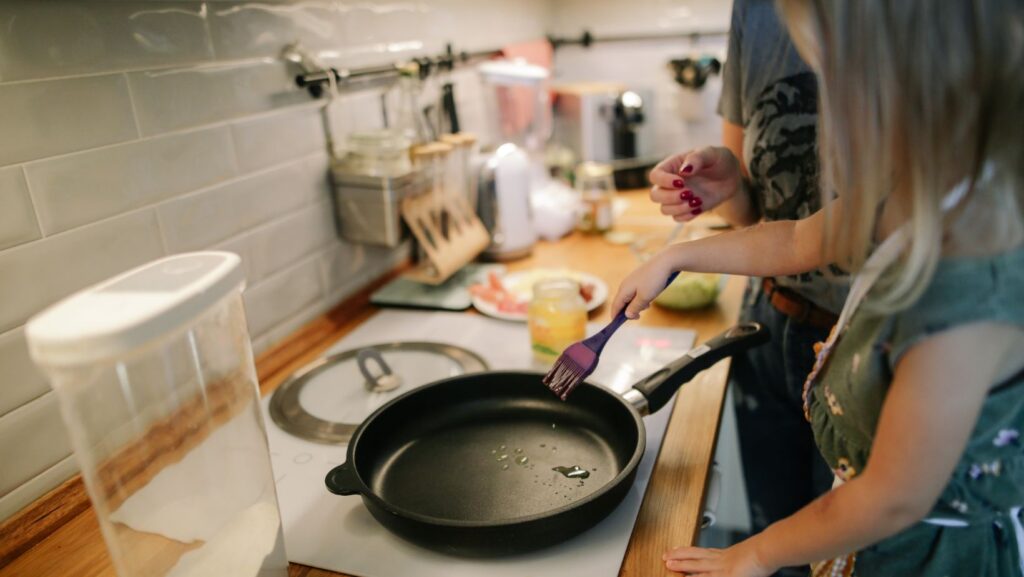Induction Cooking Tips

Induction cooking, a marvel of modern technology, has revolutionized the culinary world. It’s fast, energy-efficient, and offers precise temperature control. But to truly master this cooking method, you need more than just the basics.
This article will delve into the art of induction cooking, offering tips and tricks to enhance your culinary skills. Whether you’re a seasoned chef or a beginner, these insights will help you perfect the art of induction cooking. So, let’s unlock the potential of your induction cooktop and elevate your kitchen game.
Understanding Induction Cooking
After discussing induction cooking benefits in the preceding section, the logical progression involves diving deeper into this modern cooking approach. The following subheadings unravel the mechanism behind induction cooking and distill its inherent benefits, enhancing culinary skills and kitchen efficiency.
How Induction Cooking Works

In the heart of induction cooking lies an electromagnetic phenomenon. Induction cooktops contain a coil of copper wire underneath the ceramic plate. Upon turning on the appliance, an alternating electric current passes through the coil and creates an invisible magnetic field. It is crucial to use pans made of ferromagnetic materials like cast iron or stainless steel. As these pans contact the copper coil, they absorb the magnetic field and convert it into heat. In essence, the cookware itself becomes the cooking element – a reason for superior temperature precision and swift heat alteration in induction cooking.
For instance, consider boiling water on an induction stove versus a conventional one. The former heats the kettle directly, cutting boiling time by a noticeable margin. Conversely, traditional stoves heat the burner first, prolonging the overall cooking process.
Benefits of Induction Cooking
Promoting better cooking control and uniform heat distribution, induction cooking offers several distinct advantages. Firstly, the nature of induction means immediate heat alteration. This rapid response allows precise temperature control, elevating culinary pursuits from simmering sauces at low temperatures to searing steaks at high.
Secondly, induction cooktops are energy-efficient. Studies show that induction cooktops are about 84% energy efficient compared to only 40% for gas cookers, serving a dual purpose of environmental responsibility and cost-saving.
Another significant advantage includes safety. As the surface of the stove stays cool during cooking, it minimizes burn risks and makes cleaning spillages easier.
Lastly, induction cooking provides consistent heat and uniform cooking, eliminating hot spots and reducing the possibility of under or overcooking food. This consistency translates into better tasting dishes, catapulting the induction method to the forefront of modern culinary practices.
Key Induction Cooking Tips
Moving forward on our journey to master induction cooking, let’s unfold some essential tips that maximize this innovative cooking technology’s potential. These tips focus on choosing the appropriate cookware and setting the accurate temperatures.
Choosing the Right Cookware
Get the best out of an induction cooktop by selecting the right cookware. Not every piece of cookware is suitable for induction cooking. Magnetically conductive materials like stainless steel or cast iron make an ideal choice. To validate the cookware’s compatibility, perform a simple magnet test. Attach a refrigerator magnet to the bottom of the pan. If it sticks, the cookware is appropriate for induction cooking.
In opting for induction-friendly cookware, consider the pan size. For efficient, even heating, select a pan that matches the diameter of the induction burner. Too small or large and the heat distributes unevenly, compromising the quality of the dish.
Setting the Correct Temperatures

Master the science of proper heat settings, a crucial aspect in induction cooking. The precise temperature control is one of its major advantages. Unlike traditional stoves, induction cooktops offer immediate heating and cooling responses.
When simmering, set the heat at a medium-low level. This temperature range, usually around 140 degrees Fahrenheit, prevents rapid boiling while ensuring the food cooks evenly. If searing is your goal, crank the heat up to high, typically around 375 degrees Fahrenheit, to ensure a crispy surface and tender interior.
Remember, each induction burner may have slightly different temperature settings. By understanding your specific cooktop, you can manipulate the heat accurately, elevating your dishes’ flavor and quality.

